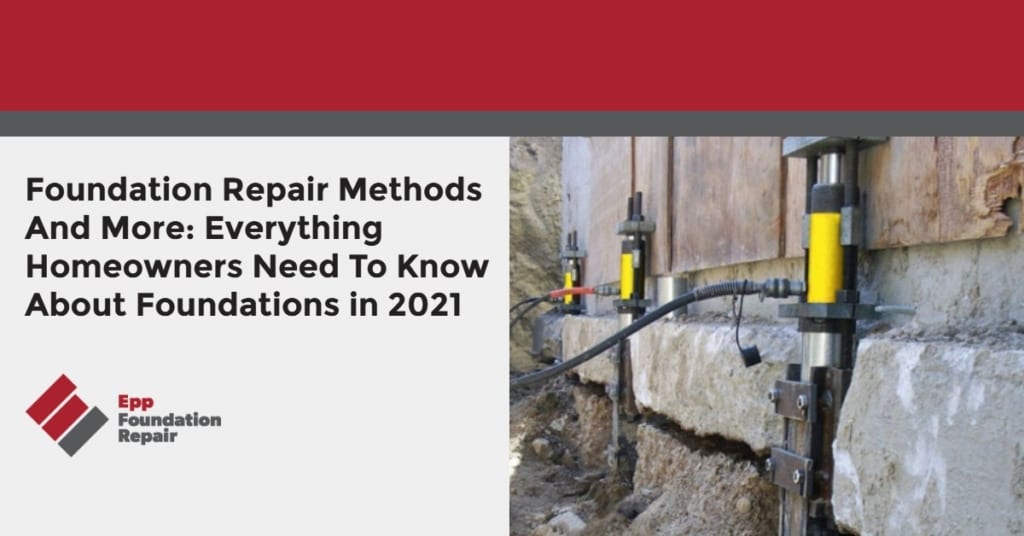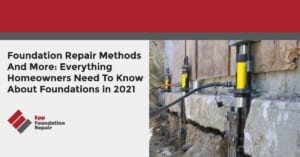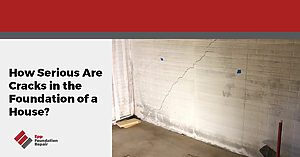There are various foundation repair methods in use today. The selected method depends to a certain extent on the type of foundation (basement, slab, or crawl space) and the materials/methods used to build it (poured concrete or cinder block). This article will cover foundation types, the materials and techniques used to build foundations, and foundation repair methods.
Foundation Types
There are three main foundation types: basement, slab, and crawl space. Most of the time, the type of foundation chosen – whether above ground (slab and crawl space) or below ground (basement) – depends on the homeowner’s personal preference and what they can afford.
Basement Foundations
There are two types of basement foundations: full and daylight. In a full basement, the walls are entirely underground. If there are any windows, they’re at ground level. In a daylight basement (also known as a walkout basement), some walls are not underground. Instead, they’re either partly underground or entirely above ground. Either basement type – full or daylight – can be finished or unfinished. Finished basements are often used as living areas, and unfinished basements are used for storage, laundry rooms, etc.
Slab Foundations
Slab foundations are both common and inexpensive. They’re suitable for regions where the ground doesn’t go through a freeze-thaw cycle. The downside to slab foundations involves accessing the plumbing. If there’s a problem with the plumbing, the contractor needs to break up the floor.
Crawl Space Foundations
Crawl space foundation walls are shorter than basement foundation walls and elevate the house from 1 to 5 feet off the ground. This provides easy access to the home’s plumbing and wiring. You can crawl around in crawl spaces, but you can’t live in them. Encapsulated crawl spaces are suitable for storage, though. Crawl space foundations are a cost-effective alternative to basement foundations.
Materials And Methods Used To Build Foundations
There are foundation types (we just talked about those), and then there are the materials and methods used to build foundations. Today, almost all foundations are built using either poured concrete or cinder blocks.
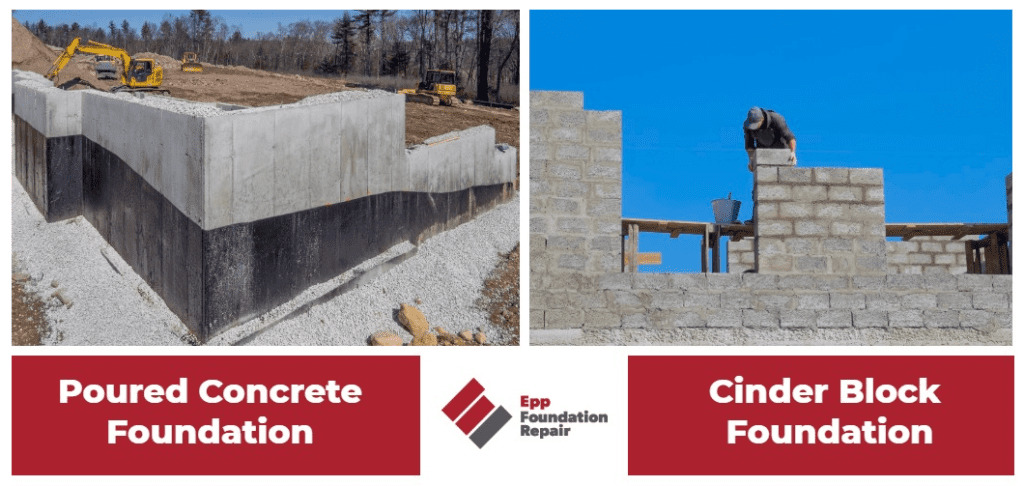
Poured concrete foundations
Poured concrete foundations are a popular choice for new homes because they’re faster to build than cinder block foundations, and they’re better able to resist hydrostatic pressure. They’re also easier to waterproof because they don’t have any joints other than the cove joint where the wall meets the floor.
The cons of poured concrete foundations include problems with concrete curing. Improperly cured concrete won’t be as strong and could develop non-structural cracks that will allow water to seep into the basement or crawl space. Poured concrete foundations are more expensive than cinder block foundations because wet concrete needs to be brought to the job site.
Poured concrete foundations are created via building wooden wall forms and then pouring concrete into them. When the concrete has cured, the wooden forms are removed.
Today, rebar is used in every poured concrete foundation wall. At one time, it was acceptable to use very little rebar or none at all. However, most municipalities now require building contractors to follow the minimum standards set by the ICC and international building codes, which require #4 rebar every 2 feet.
Cinder block foundations
Today, cinder block foundations are less common than poured concrete foundations. However, this wasn’t always the case. Most homes over a certain age have cinder block foundations
Cinder block foundations are built using concrete masonry units (CMU). These are hollow, rectangular blocks around 8-10″ x 16″. Cinder block foundations can support more weight than poured concrete, but it takes a skilled mason to construct them properly. The blocks are heavy, but they’re easy to buy and transport.
Foundation walls built using cinder blocks are also more prone to bowing caused by hydrostatic pressure. Waterproofing is more difficult because the walls are constructed using mortar which will – over time – erode and spring leaks.
Unlike poured concrete foundations, walls built using cinder blocks don’t require wooden forms. The walls can be made stronger by inserting rebar into the core of the blocks and then filling them with mortar. Cinder block foundation walls built this way can hold up a lot of weight.
Brick foundations
You won’t find contractors building brick foundations today, but they were common in the early 20th century. Today, many brick foundations are experiencing problems because time has weakened both the mortar and the brick.
Learn more about: How to repair a wet basement.
Foundation Repair Methods Compared
Foundation repair options include,
Push Piers
Push piers are the most commonly used method of stabilizing and strengthening homes experiencing foundation settlement. The steel piers are driven deep into the ground until they reach the load-bearing strata. After they’re in place, synchronized hydraulic jacks lift and level the foundation.
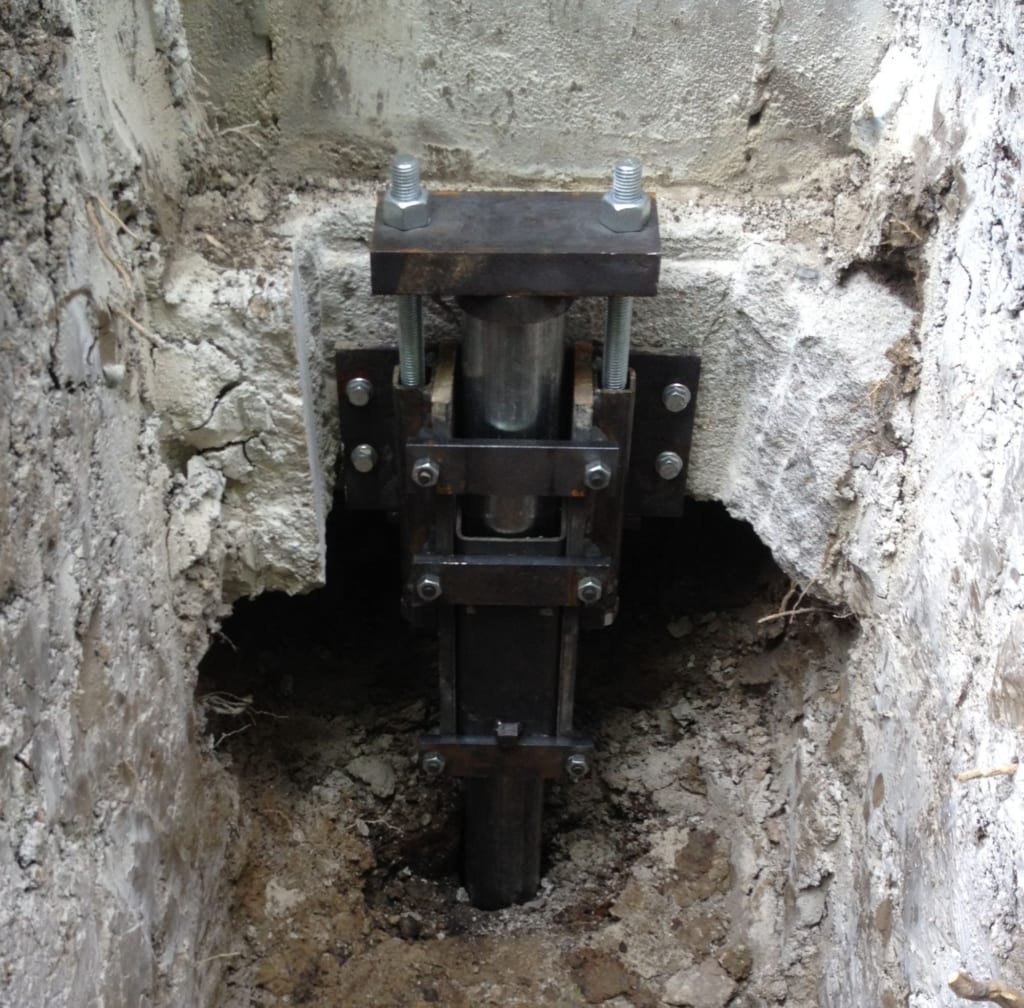
Helical Piers
Helical piers are generally used for new construction projects. However, they’re sometimes used to repair existing homes experiencing foundation settlement. They’re shaped like giant screws and turned into the ground until they hit load-bearing soil. Synchronized hydraulic jacks then lift the foundation back up.
At Epp Foundation Repair, we usually use push piers to for basement foundation repair. Occasionally, we have to replace a push pier with a helical pier if something prevents us from using a push pier.
When it comes to slab foundations, our decision to use either push piers or helical piers depends on the weight of the home. We generally use push piers for heavier structures and helical piers for lighter structures.
Crawl Space Support Jacks
If you own a home with a crawl space, it’s possible to have symptoms of foundation settlement even though your foundation is perfectly sound. Does your floor feel spongy? Does your furniture shake as you walk by? These symptoms can appear when you have settled support posts or deteriorated screw jacks. This problem can be fixed by replacing either the posts and/or the screw jacks.
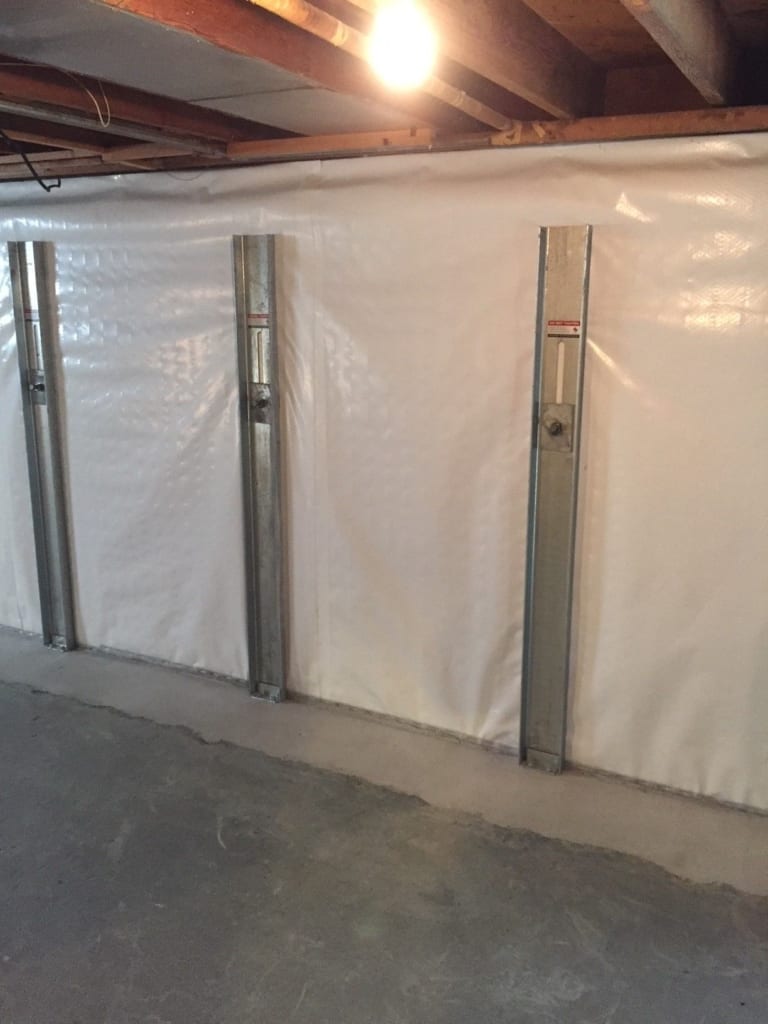
Basement Wall Repair
There are various ways to repair basement wall cracks. The method used depends on whether the crack is structural or not. (Structural cracks are those that threaten a building’s structural integrity.)
Non-structural foundation cracks are repaired using either epoxy injection or carbon fiber straps. The repair options for structural foundation cracks include wall plate anchors, carbon fiber straps, and push piers.
For more information, see Structural or Non-Structural? Understanding Foundation Cracks.
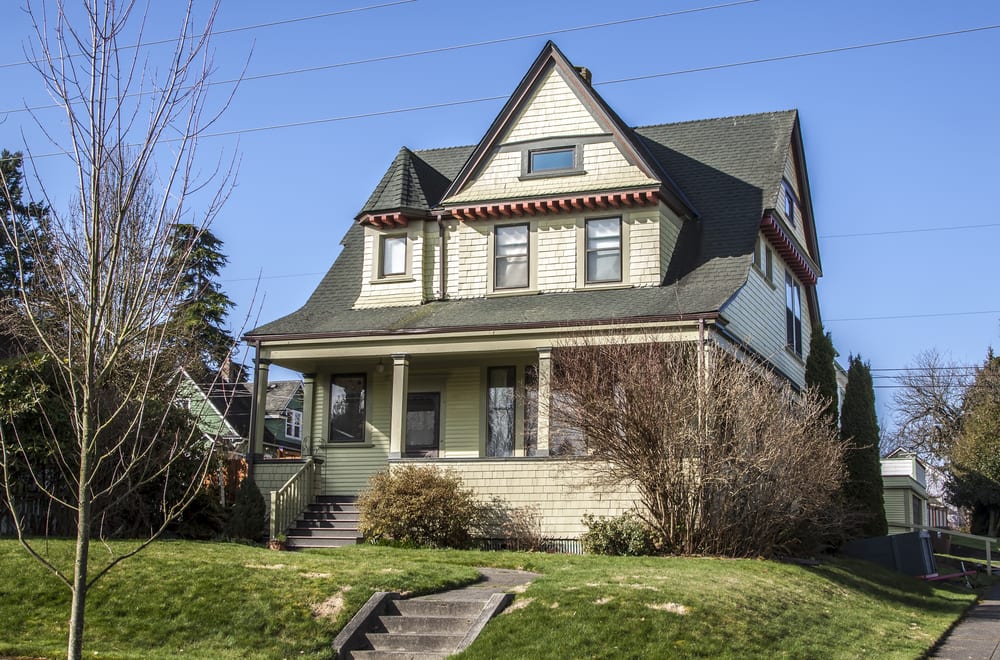
Brick Foundation Repair Methods
While it’s more challenging to repair homes with brick and stone foundations, it’s not impossible. C-channels or a carbon fiber product can be used to stabilize a bowed wall. However, if the wall is severely bowed, it’s probably best to have the foundation replaced.
Fixing settlement issues is tricky because these types of older foundations may preclude contractors from using push piers because they put strain on the foundation during installation. It might be possible to use helical piers instead.
The truth is, it’s often not practical to repair foundations over a certain age. For these brick and stone foundations, replacement may be the better option. (At Epp Foundation Repair, we don’t perform foundation replacement.)
If you think your home might have a foundation issue and you’re in our service area in Nebraska, Iowa, Kansas, and Missouri. The top cities we serve are Lincoln, Omaha, Grand Island, Kearney, Norfolk, and many more; contact us today for a free estimate.

